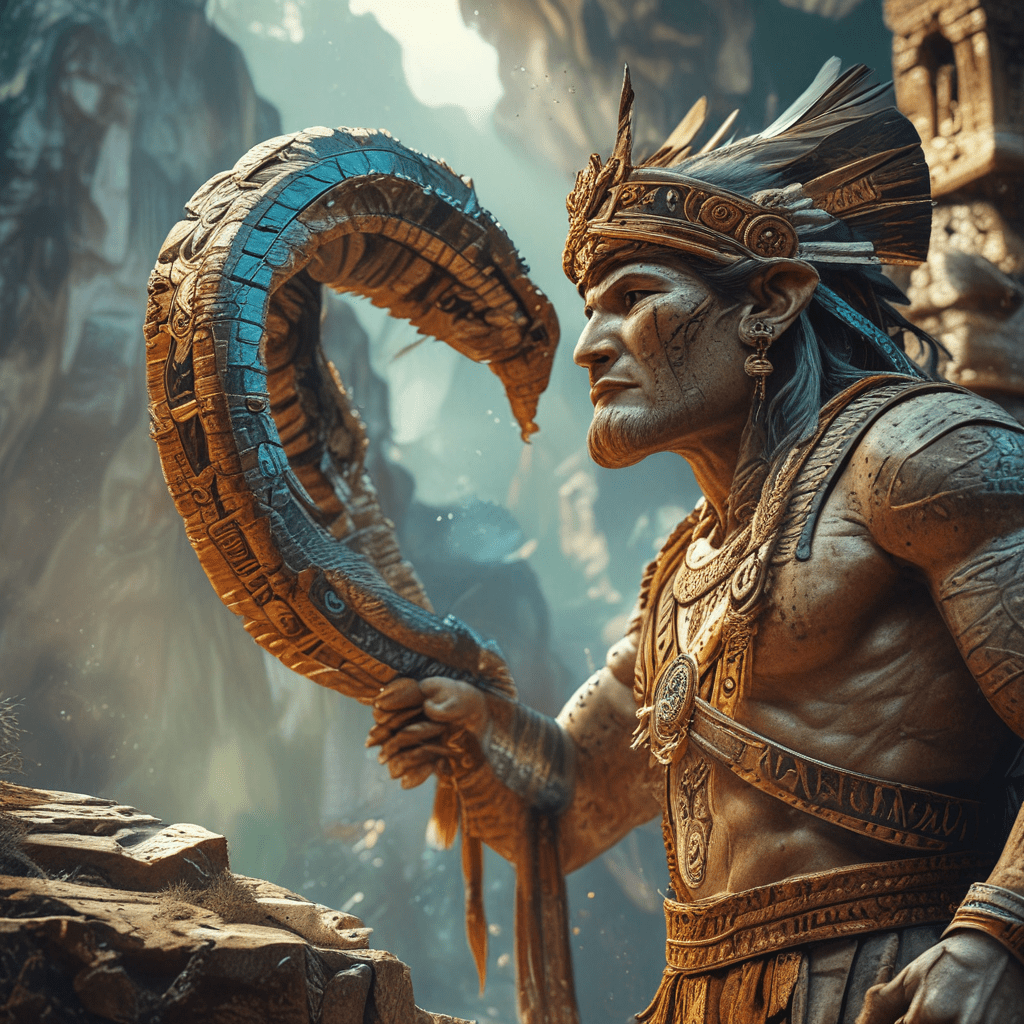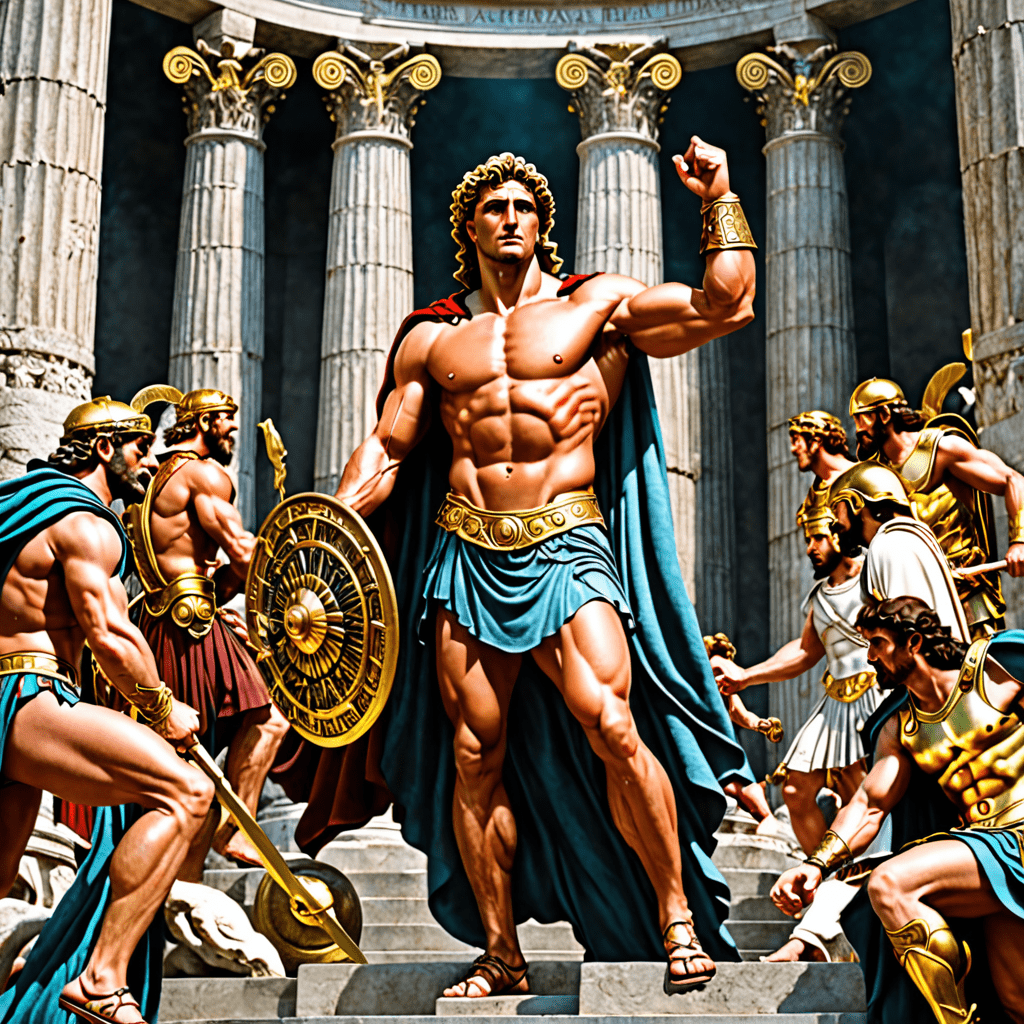Amaru: The Serpent Deity in Incan Mythology
The Amaru, a serpentine deity, holds a prominent position in Incan mythology, representing a powerful symbol of creation, fertility, and the underworld. The Amaru is intricately woven into the fabric of Incan beliefs, shaping their worldview and influencing their cultural practices.
The Serpent in Andean Culture
The serpent, a prevalent figure in many ancient cultures, occupies a significant place in Andean mythology. In the Andes, the serpent is often associated with water, rain, and fertility, reflecting the importance of these elements for agricultural societies. Its sinuous movements, echoing the flow of rivers and the growth of crops, further reinforced its connection to life-giving forces. The serpent is also seen as a guardian of sacred places and a symbol of wisdom and knowledge.
Amaru’s Role in Creation Myths
In Incan creation myths, the Amaru plays a crucial role in the birth of the world. One myth tells the story of Viracocha, the supreme creator god, who emerged from Lake Titicaca and created the world from the back of a giant serpent. Some myths describe the Amaru as the ancestor of the Inca people, suggesting a connection between the divine and the royal lineage.
Amaru as a Symbol of Fertility and Renewal
The Amaru is deeply associated with fertility and the cycle of life and death. Its ability to shed its skin and regenerate represents the ongoing renewal of nature. The serpent's connection to the earth and its association with life-giving forces like water reinforced this symbolic representation.
Amaru’s Association with the Underworld
The Amaru also has a connection to the underworld, known as the "Ukhu Pacha" in Incan mythology. This subterranean realm is considered a place of darkness and mystery, where the spirits of the dead reside. The Amaru, as a creature of the depths, was believed to act as a guide between the world of the living and the world of the dead, transporting souls into the underworld.
Amaru’s Connection to Royalty and Power
The Amaru's connection to the Inca Empire is deeply ingrained in Incan mythology and history. The Inca rulers, known as the Sapa Inca, were believed to be descendants of the sun god Inti and were often depicted with Amaru imagery. The Amaru's association with the sun god, who was the ultimate source of life and power, further reinforced the Inca rulers' divine right to rule. The Amaru was a powerful symbol of royal authority, representing the Inca's control over the land, people, and spiritual forces. This connection is evident in many ancient Inca artifacts depicting rulers with Amaru attributes, such as serpents adorning their clothing or headdresses.
The Amaru and the Inca Empire
The Amaru's presence in Incan society extended beyond mythology and ritual. The Inca Empire, spanning a vast territory in the Andes, was organized around a system of interconnected provinces called "suyus." Each suyu was associated with a specific color, and the Amaru was often depicted in these colors. The Amaru's presence in each suyu symbolized the unity and interconnectedness of the Inca Empire, highlighting the shared beliefs and cultural values that bound the different regions together.
Amaru in Incan Rituals and Offerings
The Amaru was a central figure in Incan rituals and offerings. Incan priests would perform ceremonies involving the Amaru, seeking its blessings for fertility, good harvests, and protection from harm. Offerings, often including precious metals, textiles, and food, were presented to the Amaru as a way to appease the deity and gain its favor. These rituals were particularly important during agricultural festivals, when the Incas sought to ensure a bountiful harvest.
The Amaru in Contemporary Andean Culture
Despite the decline of the Inca Empire, the Amaru continues to play a significant role in contemporary Andean culture. The serpent deity is still revered as a symbol of fertility, wisdom, and power in many indigenous communities. Amaru imagery appears in traditional textiles, ceramics, and music, serving as a reminder of the enduring influence of Incan mythology. The Amaru also appears in contemporary Andean art and literature, reflecting its continued presence in the cultural consciousness of the region.
Theories on the Origins of the Amaru
The origins of the Amaru, like many ancient deities, are shrouded in mystery. Some scholars believe that the serpent deity is a pre-Incan figure, adopted and incorporated into Incan mythology. Others argue that the Amaru may have originated from the worship of snakes, which were revered for their connection to the earth and their ability to shed their skin and regenerate. Regardless of its origins, the Amaru is a powerful symbol that reflects the deep connection between humans, nature, and the spiritual realm in Andean cultures.
The Amaru’s Influence on Other Andean Mythologies
The Amaru's influence extends beyond Incan mythology, shaping other Andean belief systems. In the Quechua language, the word "Amaru" is used to refer to a variety of serpentine deities and creatures, including giant snakes, dragons, and even the rainbow. The Amaru's association with water, fertility, and the underworld is echoed in many other Andean mythologies, highlighting its enduring presence in the cultural imaginations of the region.
FAQ
Q: Why is the Amaru important in Incan mythology?
A: The Amaru is a central figure in Incan mythology, representing creation, fertility, and the underworld. It connects the Inca Empire with the divine realm and plays a significant role in their rituals and offerings.
Q: What does the Amaru symbolize?
A: The Amaru is a symbol of fertility, renewal, wisdom, and power. It is associated with water, rain, and the earth's life-giving forces.
Q: How does the Amaru connect to the Inca rulers?
A: The Inca rulers were believed to be descendants of the sun god Inti, and the Amaru was associated with the sun god. The Amaru's connection to the sun god strengthened the Inca rulers' divine right to rule.
Q: What is the Amaru's role in Incan rituals?
A: The Amaru was a central figure in Incan rituals and offerings. Incan priests performed ceremonies involving the Amaru to seek blessings for fertility, good harvests, and protection from harm.
Q: Does the Amaru still have relevance in contemporary Andean culture?
A: Yes, the Amaru remains a significant symbol in contemporary Andean culture, appearing in traditional art, textiles, music, and literature. It represents the enduring influence of Incan mythology and the connection to the divine realm.



